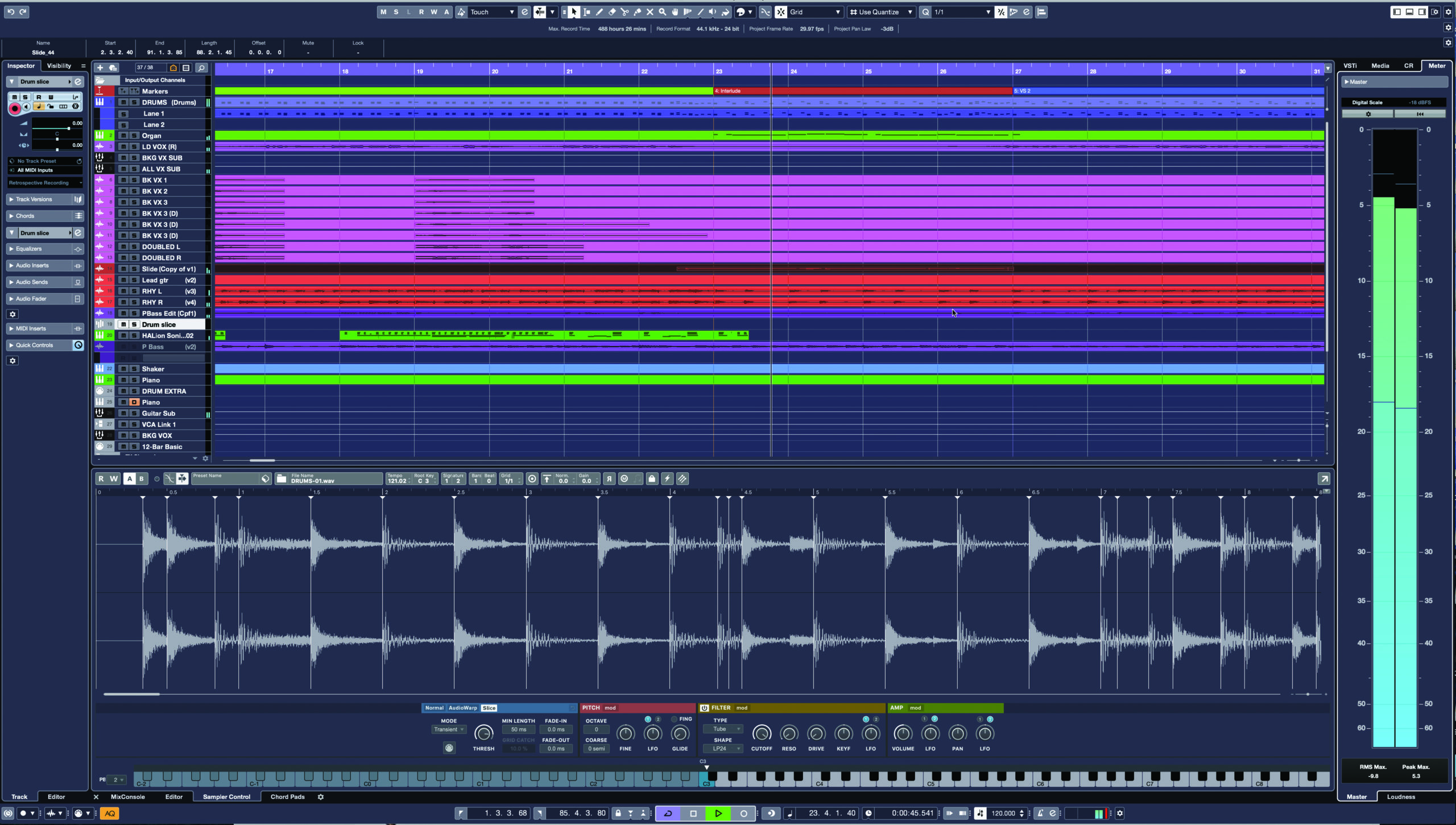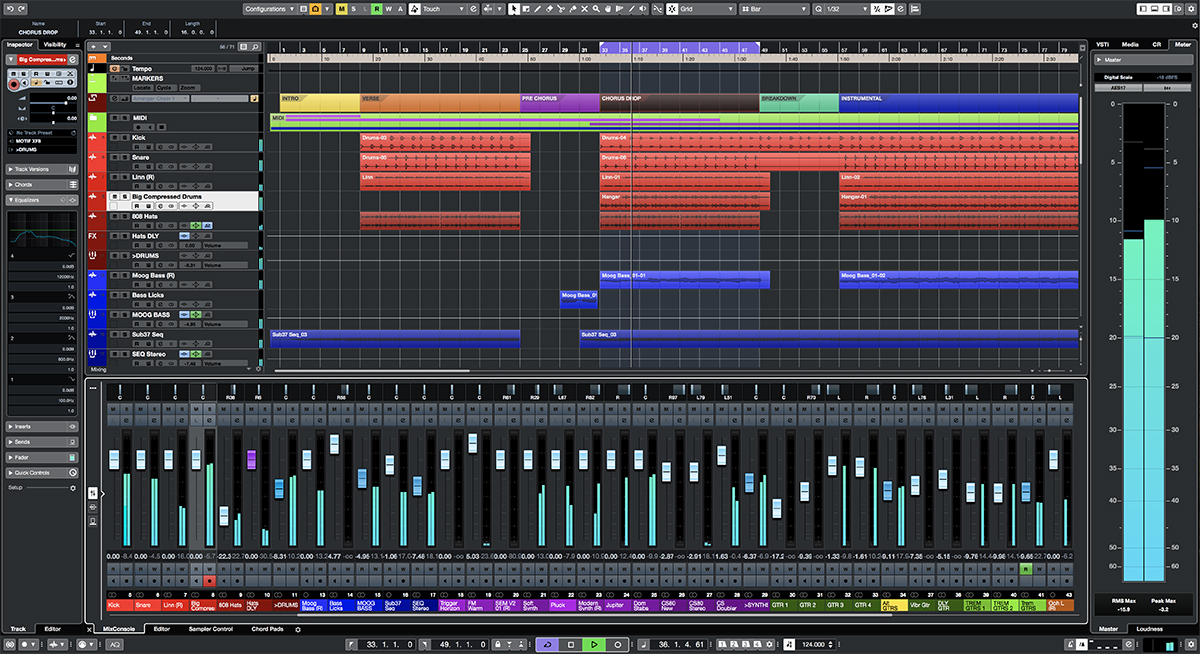

The snare is the foundation of the backbeat, and typically one of the loudest elements in the mix. Start by setting the snare fader at 0 dB and bringing the rest of the drum mix in around it. However, many engineers choose to start their mix with the drums, as they encompass the entire frequency spectrum, making it easier to hear the balance between high and low frequencies. So the loudest instrument should be whatever is the focal point of the song at that moment. Only one instrument can be the loudest track in the mix at a time. Allowing you to make informers mixing decisions that lead to improvements in your sound. Level match in REFERENCE takes this issue out of the equation by accurately matching the perceived loudness of all of your reference tracks to the track you’re working on. Since you’re still in the mix stage, your production should be a few dB quieter than a fully mastered track. As I mentioned earlier, louder sounds seem brighter in the top-end and fuller in the low-end which can trick you into making poor mixing decisions. Just be sure to use the level match feature in REFERENCE for a fair comparison. You can repeat this process for every instrument in the mix. If the volume of the snare is louder in the reference track, bring your snare fader up to match. Then toggle back to your track and compare. Just drag and drop your reference tracks into the Wave Transport and listen to how loud the snare sounds in the context of the rest of the mix.

Mastering The Mix plugin REFERENCE makes it easy to compare your mix to your favorite tracks and quickly identify differences in volume.

One simple way to help you dial in a balanced mix is to use reference tracks. It can be difficult to know exactly how loud each instrument should be in a mix. The plugins can then help you sculpt your sound to 100% of what you’re shooting for.Ĭreating a basic balance between each of the tracks at the beginning of a mix gives you a solid foundation to work from and makes it easier to make critical mixing decisions down the road, like which frequencies to cut or how much compression to apply. Setting the loudness of a channel first helps you get 80% of the way there. This is why reaching for plugins right out the gate might actually mean you spend more time trying to improve your sound.

As you increase the volume of an instrument in a mix, it sounds closer to the listener, with more fullness in the low-end and clarity in the high-end. That’s why it’s crucial to make sure that your mix is balanced and each instrument is at the proper level relative to the other channels. Only how loud each element is in the track. But mixers have no control over how loud people listen to music. The ideal listening range for most home studios is around 73-76dB SPL. That’s why it’s almost impossible to hear the bass when listening at low levels, but you can still hear the vocals.Īs playback volume increases, our hearing becomes more balanced, making it easier to hear the high and low frequencies evenly. When a track is played at low volumes, humans are still able to make out frequencies from 1-5 kHz pretty clearly, but we have trouble hearing frequencies under 500 Hz.
MIXING VOCALS CUBASE AI 5 ISO
The ISO published a set of standards in 2003 called the equal-loudness contours that show how sound pressure level, or volume, can affect how we perceive sound. Loudness has a big impact on how people perceive sound. If one instrument is too loud, it can make it difficult to hear one or more of the other instruments in the mix. In order to hear everything clearly, the mix must be well balanced. Most modern productions have a lot going on.
MIXING VOCALS CUBASE AI 5 HOW TO
In this blog, we’ll show you how to balance each element in a mix for a professional, cohesive sound. Doing this first leads to less significant changes when processing your mix with plugins, meaning you can get greater results with even the simplest tools. Using simple level manipulation, you can quickly dial in a balanced mix. The truth is, the most important element in any mix is the balance between each element. I thought if I used the same gear as them, my mixes would sound like theirs.Įventually, I stumbled across a YouTube video of one of my idols mixing with stock plug-ins, just to prove that it could be done. I remember when I first started learning how to mix, I would research which compressors my favorite mixers used on certain songs. Have you ever heard the phrase, “It’s the ear, not the gear?”
MIXING VOCALS CUBASE AI 5 PRO
Test your ability to balance channels like a pro below.


 0 kommentar(er)
0 kommentar(er)
